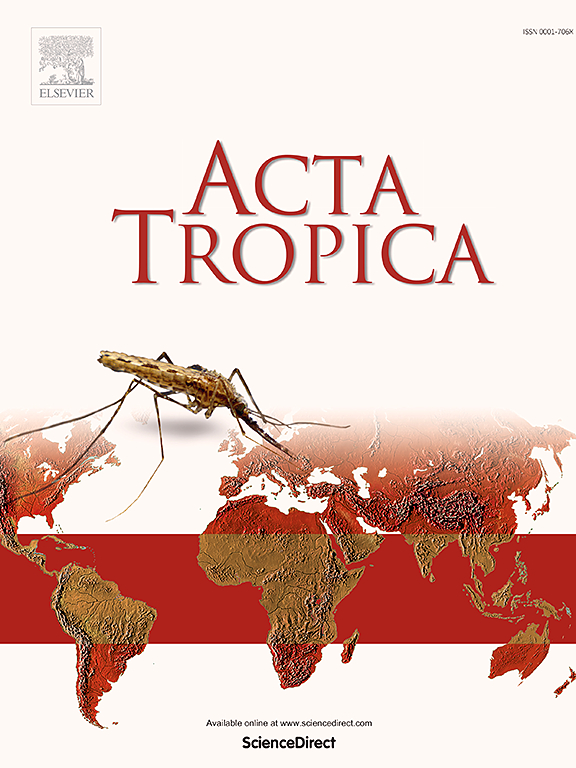Hidden Trypanosoma cruzi foci in Triatoma brasiliensis from a Brazilian Touristic area in the Northeast
IF 2.1
3区 医学
Q2 PARASITOLOGY
引用次数: 0
Abstract
This study aimed to assess the risk of human-vector interactions and Trypanosoma cruzi transmission in touristic areas of northeastern Brazil. We analyzed 180 adult Triatoma brasiliensis specimens collected from nine peridomestic and sylvatic ecotopes across the states of Rio Grande do Norte and Paraíba. High T. cruzi infection rates were detected in both ecotopes, indicating sustained parasite circulation. Metabarcoding of blood meals revealed a broader host range than previously documented, including human blood meals in sylvatic touristic areas with high infection rates, raising concerns about vector-mediated transmission in these settings. Given the potential public health implications, our findings were formally communicated to local health and tourism authorities, with specific recommendations to inform and protect visitors in high-risk zones. These results underscore the need for targeted surveillance and vector control strategies in tourist-exposed areas, where interventions must be integrated with efforts to preserve local cultural and ecological heritage.
巴西东北旅游区巴西三角瘤隐匿克氏锥虫疫源地
本研究旨在评估巴西东北部旅游区人病媒相互作用和克氏锥虫传播的风险。我们分析了180个巴西三角杉成虫标本,这些标本来自巴西北部大德州和Paraíba州的9个栖息地和森林生态区。两个生态区均检测到较高的克氏体感染率,表明寄生虫持续传播。血餐的元条形码显示宿主范围比以前记录的更广,包括高感染率的森林旅游区的人血餐,这引起了对这些环境中媒介传播的关注。鉴于潜在的公共卫生影响,我们的调查结果已正式通报给当地卫生和旅游主管部门,并提出了具体建议,告知和保护高危地区的游客。这些结果强调了在游客暴露地区需要有针对性的监测和病媒控制战略,这些干预措施必须与保护当地文化和生态遗产的努力相结合。
本文章由计算机程序翻译,如有差异,请以英文原文为准。
求助全文
约1分钟内获得全文
求助全文
来源期刊

Acta tropica
医学-寄生虫学
CiteScore
5.40
自引率
11.10%
发文量
383
审稿时长
37 days
期刊介绍:
Acta Tropica, is an international journal on infectious diseases that covers public health sciences and biomedical research with particular emphasis on topics relevant to human and animal health in the tropics and the subtropics.
 求助内容:
求助内容: 应助结果提醒方式:
应助结果提醒方式:


